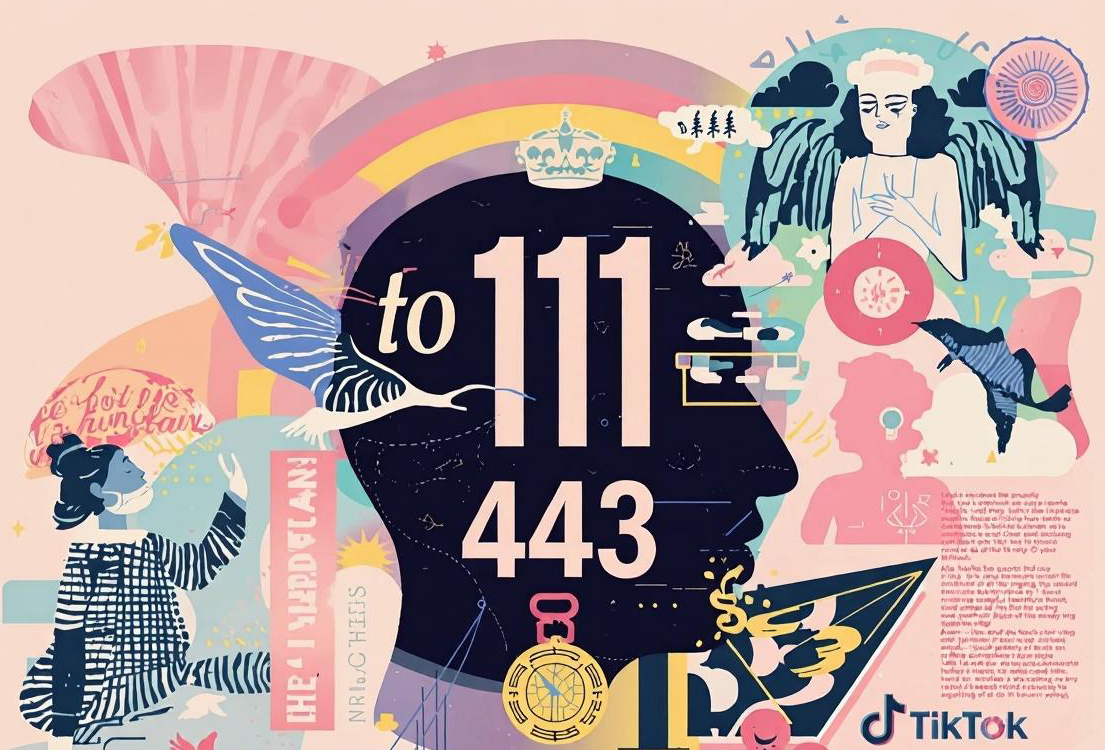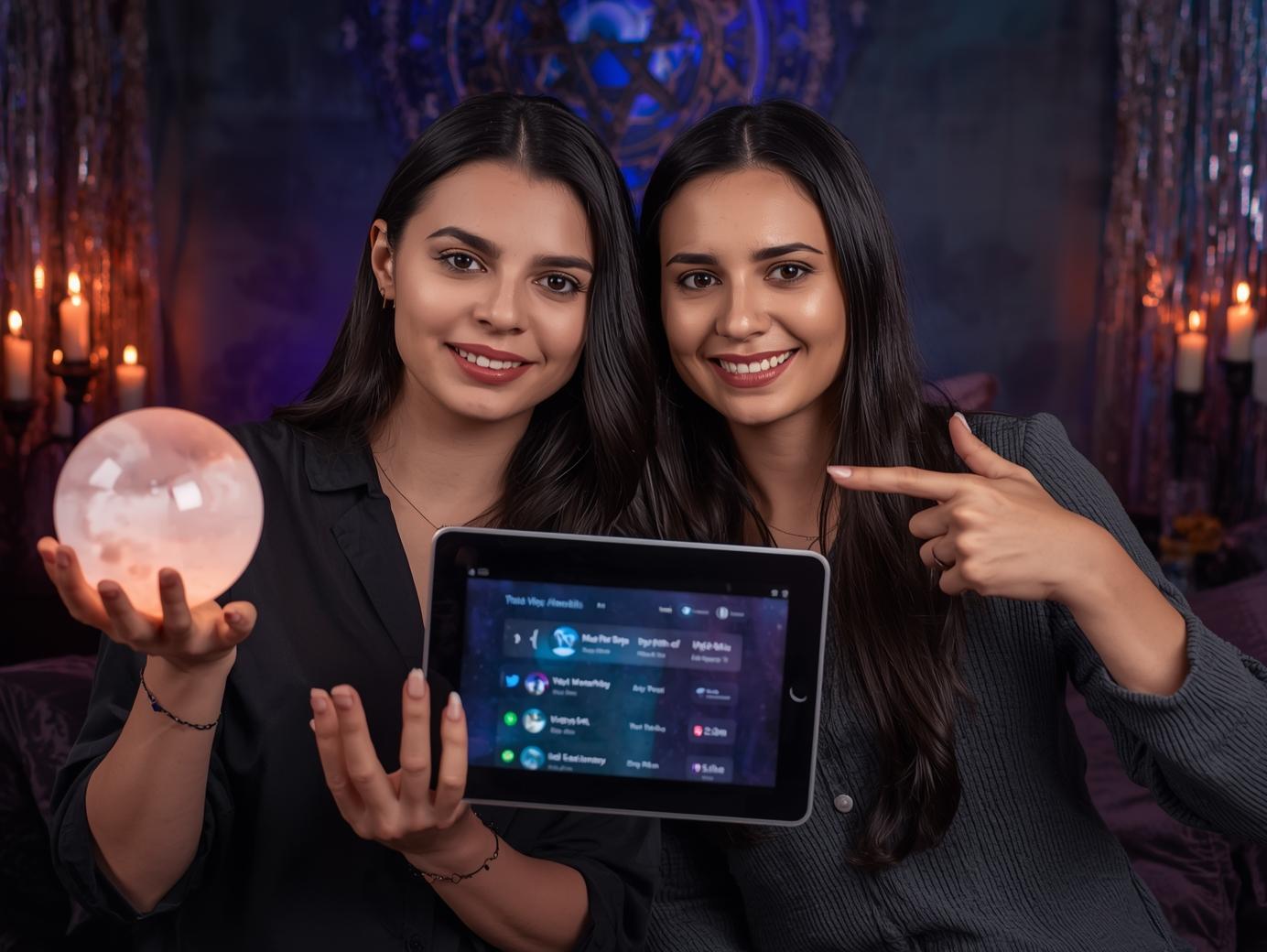The Gen Z Tarot Boom
Tarot was once tucked away in the dark corners, practiced in dark rooms of dilapidated buildings. Still, now it is easy to picture a Gen Z student pulling out a tarot deck between classes or a young professional scrolling WitchTok at midnight. So many are content to watch a psychic flip cards while lo-fi beats hum in the background. The once niche, occult circle activity has become a lifestyle accessory, self-care tool, and a cultural language for a newly adult generation.
There is a twist to all of this. It is not only a spiritual renaissance. It is a growing business opportunity, especially when it comes to affiliate marketing. With Gen Z’s hunger for intuitive tools and authentic guidance, affiliates who promote tarot-related products, services, and psychic platforms can easily tap into a deeply engaged market that continues to grow.
Gen Z Loves Tarot: A Cultural Shift

From Fortune Telling to Self-Care
For past generations, tarot tended to focus on predictions. Questions like “Will I meet someone? Will I get the job?” were common. For Gen Z, tarot is much more about reflection than prediction. The cards are more mirrors for Gen Z, and there are not so many maps.
Tarot has been reframed as a wellness practice. People are pulling cards to check in with their mental state, to frame journaling, and even to manage anxiety. This resonates well with a generation that is often skeptical of institutions and hungry for deeper meaning at the same time.
Social Media’s Role
Tarot is absolutely thriving on TikTok and Instagram. WitchTok alone has billions of views, making mystical content both viral and accessible. Influencers are able to combine tarot aesthetics with trending audio, creating a simple three-card spread that is digestible as a meme. Hashtags like #PickACard and #TarotReading can attract millions of views each day. Adding a few candles, crystals, and the proper soft lighting makes tarot part of digital culture, not something hidden away.
As one MDPI study notes, TikTok’s algorithm itself is treated as spiritual by many, with people interpreting what happens to appear on their feed as some divinely timed guidance.
One Example: The Pick a Card Trend
On TikTok, creators will post multiple card spreads and ask viewers to pick one while they pause for a few seconds. After the pause, they reveal the card or the meaning. It feels interactive and somewhat personal, but requires no paid one-on-one session. This format exploded because it marries introspection and entertainment. This is what Gen Z truly craves.
The Psychology of Tarot for the Digital Native
Storytelling That Fits Digital Life
Gez Z grew up on short-form storytelling: TikTok skits, memes, and YouTube clips. Tarot fits this structure perfectly. Each card is an archetypal story that can be told in seconds while also resonating deeply for so many. Perhaps you see The Fool’s leap of faith or Death’s transformational qualities.
Attention Spans Paired with Micro-Meaning
Tarot cards are bite-sized pieces of wisdom. A single card can carry meaning for days in an era of short attention spans. That is a big part of why TikTok tarot thrives. It delivers instant resonance with no long explanation needed.
Algorithmic Synchronicity
Gen Z tends to interpret what appears on their feed as meant for them specifically. Researchers at the International Journal of Communication found that users experience TikTok’s “For You Page” as a type of mystical guidance, a “conversation with the universe” (IJOC). For affiliate marketers, this builds an environment where tarot is not just content but divine timing and intervention.
Spiritual Without Being Religious
Gen Z is the least religious generation in the history of the United States, but also one of the most spiritual. Surveys have shown they are more likely to identify as “spiritual but not religious,” open to tarot, astrology, psychic practices, and crystals (Pew Research Center, American Survey Center). This openness to the spiritual makes tarot culturally relevant and commercially viable.
Affiliate Marketing Meets Tarot
Why Tarot is Ideal for Affiliates
Affiliate marketing thrives in specific niches. Especially those where:
- Products are visual (tarot decks, crystals, journals)
- Purchases feel personal (choosing a deck is like choosing a partner)
- Content can go viral (TikTok pulls, Instagram Reels, Pinterest boards)
Tarot is able to check every box. When you add in the boom for online psychic services, affiliates now have a two-fold opportunity to promote physical tarot products and psychic service platforms.
Example: PsychicOz Affiliate Program
The PsychicOz Affiliate Program offers $150 per new client signup. Combining tarot content with links to live psychic services is powerful for affiliates. Someone who watches tarot on TikTok may be ready to book a deeper reading—affiliates bridge that gap.
Other Affiliate Opportunities
While PsychicOz may be a top contender for TikTok, there are other areas of affiliate marketing.
- Tarot decks & guidebooks (Amazon, Etsy, niche publishers)
- Spiritual subscription boxes (candles, crystals, incense)
- Tarot and astrology apps (subscription models with affiliate payouts)
- Courses & workshops (tarot mastery, psychic development)
How to Market Tarot to Gen Z
Authenticity is Key
Gen Z is able to sniff out inauthenticity quickly, especially when it comes to marketing. Affiliate promotion must feel genuine, like a natural extension of the creator’s own practice. Instead of pushing products, you must tell stories like: “This is the deck I used during my insane breakup, and it helped me reframe everything.”
Platforms and Strategies to Try
- TikTok – Use short “pick a card” readings, with related affiliate links in the bio for psychic sessions or specific decks.
- Instagram – Utilize aesthetic spreads, reels, and carousel posts to promote affiliate products.
- Pinterest – Try boards that feature tarot spreads, journals, and spiritual accessories that are all linked via affiliate programs.
- YouTube – Create long-form reviews of tarot decks with affiliate links in the description.
Example: Affiliate Funnel
One TikTok tarot reader posts daily three-card pulls. In the caption, they write: “Want a full reading? Check the link in my bio.” That link will lead to an affiliate platform like PsychicOz. Each conversion is $150, which can create a serious income stream from content they would make anyway.
Examples of Affiliate Success Strategies
YouTube Tarot Reviews
Have a creator review five tarot decks while showing aesthetics, shuffle quality, and symbolism. Each desk is linked to Amazon Affiliates. A single viral video can generate thousands in commissions.
Subscription Box Promotions
Affiliates often partner with companies offering monthly spiritual kits. Creators then film unboxings and link to affiliate signups. Gen Z loves the surprise, ritual, and collectibles.
Tarot Journaling
Affiliates now promote journals designed for tarot reflections. Gen Z is already invested in self-care and uses these to deepen practice.
Tarot-to-Psychic Pathway
Creators can offer free general pulls on TikTok, then direct viewers to affiliate psychic services for personalized readings.
Utilize the Persuasive Angle
Affiliate marketing in the psychic niche only works because people believe in it. Belief in psychics is not irrational; it is intuitive, emotional, and rooted in evidence that spiritual practices improve well-being.
For affiliates, encouraging belief is not manipulation. It is about fostering trust in something that genuinely helps people. This could potentially include:
- Tarot as Reflection – Cards can provide structure for introspection
- Psychics as Guides – Trusted advisors help people to frame choices
- Community Validation – Thousands affirm the same message to create a collective belief
- Research Connection – Spiritual intelligence is strongly linked to psychological health (PMC).
Building Long-Term Authority
For affiliates to build long-term authority, they need to have a clear purpose and style. This can include blogging with SEO terms and using email funnels. So, try a blog that ranks the “best tarot decks for beginners” with affiliate links and follow up with emails offering free tarot reading PDFs in exchange for signups promoting affiliate services. You may want to try cross-niche branding. Areas like wellness, fashion, or self-care mix well with tarot. Above all, keep things authentic and ethical. Promote trusted psychics and tools to build longevity with readers and viewers.
Future Trends to Watch For
So, what is in the pipeline for tarot and affiliates? AI-powered tarot apps are coming with personalized readings using subscription upsells. Also growing are VR/AR experiences that offer virtual spreads in immersive psychic spaces. Celebrity collaborations with musicians and fashion brands are tapping into tarot imagery. Plus, tarot is coming into mainstream wellness and is being integrated into therapy, coaching, and mindfulness apps.
The Future is In the Cards
Gen Z has moved tarot from dusty shelves into daily feeds, from the mystical taboo to mainstream self-care. For affiliate marketers, this is a true golden era. Now is a time to connect belief, culture, and commerce.
By promoting tarot decks, psychic services, and spiritual products authentically, affiliates do not just earn commissions; they are participating in a cultural movement that is redefining spirituality for a new generation. Tarot is so much more than cards. For Gen Z, it is a mirror, a meme, a ritual, and a bridge to a much more profound psychic belief. For affiliates, it is an opportunity that can be profitable while remaining profoundly meaningful.
FAQ: Affiliate Marketing Opportunities—Gen Z Is Turning to Tarot
1. Why is Gen Z interested in tarot-related content?
Gen Z blends spirituality with self-development and seeks bite-size guidance on platforms like TikTok and Instagram, where tarot feels interactive and personal.
2. Is promoting tarot as an affiliate allowed on major platforms?
Yes, but you must follow each platform’s ad policies and local laws. Avoid guarantees, make clear disclosures, and position content as guidance or entertainment.
3. What disclosures do I need for tarot affiliate links?
Use clear language such as “Paid link” or “I earn from qualifying purchases.” Add #ad or “affiliate link” in captions, bios, and pages where links appear.
4. Which content formats convert best for tarot affiliates?
Short videos (pick-a-card, “card of the day”), carousel explainers, comparison guides (apps, decks), and email mini-read series often drive clicks and sign-ups.
5. What products or services fit a tarot-affiliate stack?
Reading marketplaces, deck and book bundles, tarot apps, journaling tools, candles/crystals, and beginner courses with transparent pricing and reviews.
6. How do I keep content ethical while selling?
Set expectations, avoid predictions of specific outcomes (money, health), encourage personal agency, and include helplines or professional resources when relevant.
7. What KPIs matter beyond views?
Saves, shares, CTR to your bio or landing page, email sign-ups, trial starts, first purchases, average order value, and refund rate.
8. How can I build trust with skeptical audiences?
Show your method, explain spreads, offer free mini-guides, publish anonymized testimonials, and keep pricing and refund info easy to find.
9. Do I need niche positioning?
Yes. Examples: “career tarot for grads,” “queer-affirming love spreads,” “tarot for creatives,” or “mindful money tarot.” Specificity improves retention and SEO.
10. What SEO basics help tarot affiliate pages rank?
Answer intent-driven queries, use schema (FAQ, HowTo, Product where appropriate), compress images, add internal links, and maintain fast, mobile-first pages.
11. How do I avoid misinformation with trending topics?
State what’s intuitive vs. researched, cite credible sources where used, and update or correct posts when trends evolve or you learn more.
12. Which channels work best together?
TikTok or Reels for discovery, YouTube for depth, a blog for search capture, and an email newsletter for nurturing and launching offers.
13. How should I price or present offers to Gen Z?
Use transparent tiers, student-friendly bundles, free trials or low-commitment first sessions, and clear comparison tables.
14. Are tarot apps good affiliate offers?
Yes—strong when paired with tutorials, daily prompts, or streak challenges. Prioritize apps with reliable tracking and fair commissions.
15. How do I handle refunds or disputes from referrals?
Link to the merchant’s refund policy, explain timelines, and provide support contacts. Keep your own contact page for goodwill and documentation.
16. What legal considerations should I know?
Follow FTC or local disclosure rules, platform policies, consumer-protection laws, and avoid medical/financial claims. Keep records of partnerships and payouts.
17. How can I make content accessible?
Add captions, readable fonts, alt text for card images, and avoid color-only cues. Accessible content widens your audience and supports algorithmic reach.
18. What’s a simple funnel for tarot affiliates?
Short-form hook → value video or quiz → landing page with lead magnet → email nurturing series → affiliate offer or reading marketplace.
19. How do I choose merchants or programs?
Evaluate commission rate, cookie length, EPC, refund rate, brand reputation, support, creatives provided, and whether tracking is reliable.
20. How do I stay consistent without burning out?
Batch scripts, reuse spreads across formats, schedule posts, and rotate themes weekly (love, career, creativity, money) with a monthly content calendar.






